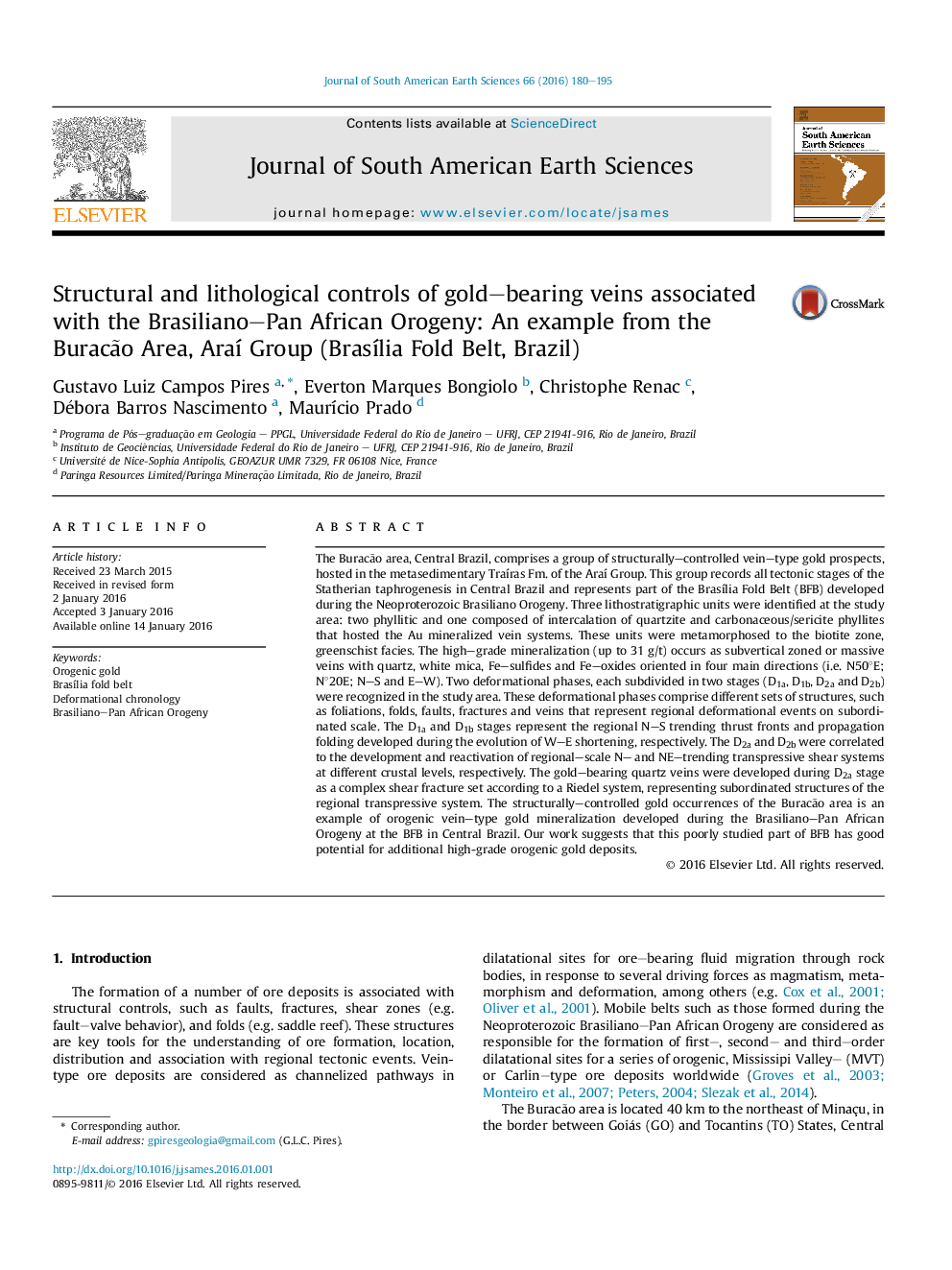| کد مقاله | کد نشریه | سال انتشار | مقاله انگلیسی | نسخه تمام متن |
|---|---|---|---|---|
| 4682098 | 1635144 | 2016 | 16 صفحه PDF | دانلود رایگان |

• The mapping units comprise intercalations of quartzites and phyllites of Traíras Fm.–Araí Group.
• The structures comprise two deformational phases, each subdivided in two stages.
• The formation of the three different vein types comprises distinct structural mechanisms.
• The ore deposition is controlled by structures and chemical interaction with phyllites.
• The Buracão area is an orogenic gold occurrence developed during Brasiliano–Pan African Orogeny.
The Buracão area, Central Brazil, comprises a group of structurally–controlled vein–type gold prospects, hosted in the metasedimentary Traíras Fm. of the Araí Group. This group records all tectonic stages of the Statherian taphrogenesis in Central Brazil and represents part of the Brasília Fold Belt (BFB) developed during the Neoproterozoic Brasiliano Orogeny. Three lithostratigraphic units were identified at the study area: two phyllitic and one composed of intercalation of quartzite and carbonaceous/sericite phyllites that hosted the Au mineralized vein systems. These units were metamorphosed to the biotite zone, greenschist facies. The high–grade mineralization (up to 31 g/t) occurs as subvertical zoned or massive veins with quartz, white mica, Fe–sulfides and Fe–oxides oriented in four main directions (i.e. N50°E; N°20E; N–S and E–W). Two deformational phases, each subdivided in two stages (D1a, D1b, D2a and D2b) were recognized in the study area. These deformational phases comprise different sets of structures, such as foliations, folds, faults, fractures and veins that represent regional deformational events on subordinated scale. The D1a and D1b stages represent the regional N–S trending thrust fronts and propagation folding developed during the evolution of W–E shortening, respectively. The D2a and D2b were correlated to the development and reactivation of regional–scale N– and NE–trending transpressive shear systems at different crustal levels, respectively. The gold–bearing quartz veins were developed during D2a stage as a complex shear fracture set according to a Riedel system, representing subordinated structures of the regional transpressive system. The structurally–controlled gold occurrences of the Buracão area is an example of orogenic vein–type gold mineralization developed during the Brasiliano–Pan African Orogeny at the BFB in Central Brazil. Our work suggests that this poorly studied part of BFB has good potential for additional high-grade orogenic gold deposits.
Figure optionsDownload as PowerPoint slide
Journal: Journal of South American Earth Sciences - Volume 66, March 2016, Pages 180–195